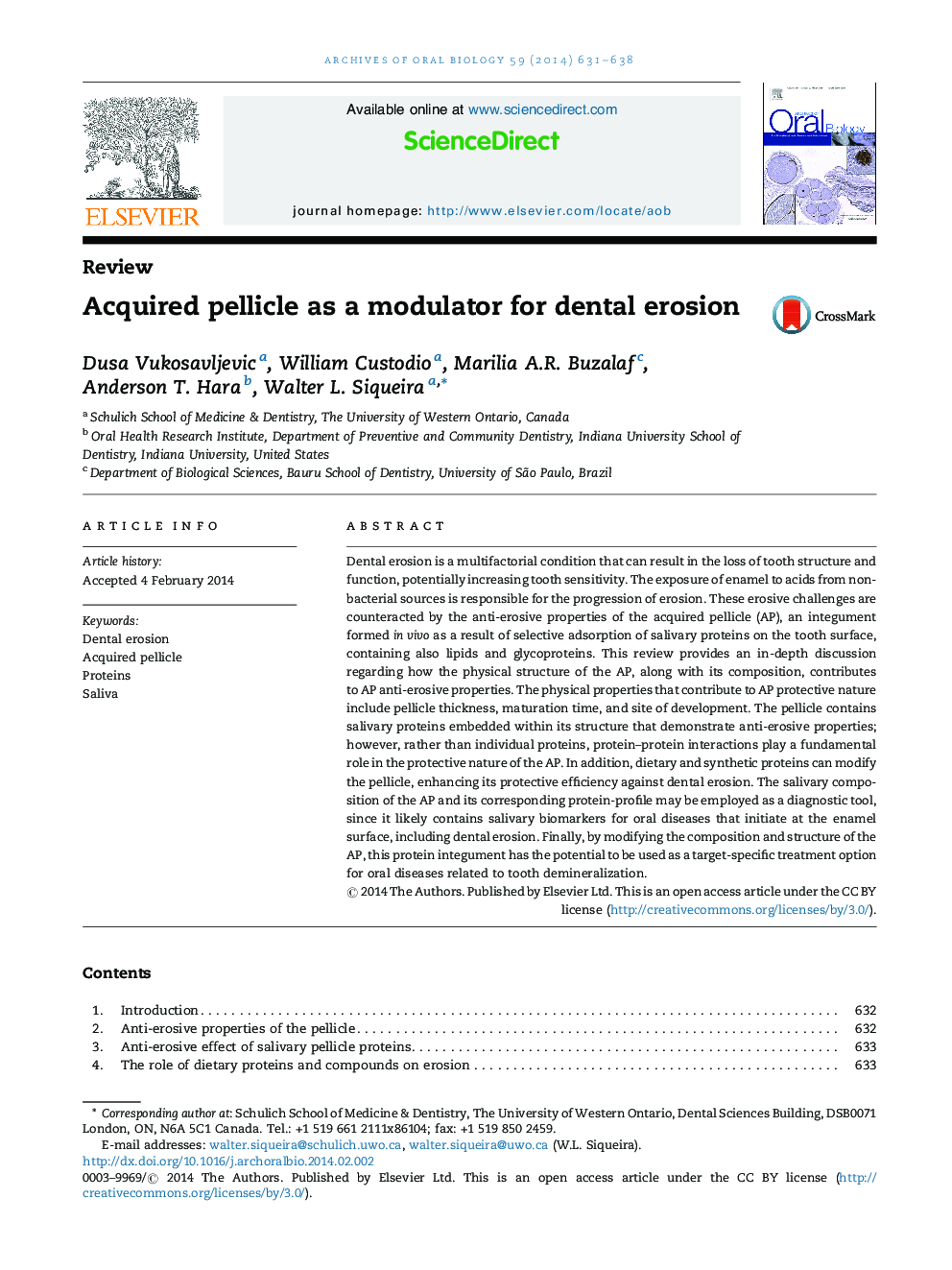| Article ID | Journal | Published Year | Pages | File Type |
|---|---|---|---|---|
| 6051179 | Archives of Oral Biology | 2014 | 8 Pages |
Dental erosion is a multifactorial condition that can result in the loss of tooth structure and function, potentially increasing tooth sensitivity. The exposure of enamel to acids from non-bacterial sources is responsible for the progression of erosion. These erosive challenges are counteracted by the anti-erosive properties of the acquired pellicle (AP), an integument formed in vivo as a result of selective adsorption of salivary proteins on the tooth surface, containing also lipids and glycoproteins. This review provides an in-depth discussion regarding how the physical structure of the AP, along with its composition, contributes to AP anti-erosive properties. The physical properties that contribute to AP protective nature include pellicle thickness, maturation time, and site of development. The pellicle contains salivary proteins embedded within its structure that demonstrate anti-erosive properties; however, rather than individual proteins, protein-protein interactions play a fundamental role in the protective nature of the AP. In addition, dietary and synthetic proteins can modify the pellicle, enhancing its protective efficiency against dental erosion. The salivary composition of the AP and its corresponding protein-profile may be employed as a diagnostic tool, since it likely contains salivary biomarkers for oral diseases that initiate at the enamel surface, including dental erosion. Finally, by modifying the composition and structure of the AP, this protein integument has the potential to be used as a target-specific treatment option for oral diseases related to tooth demineralization.
